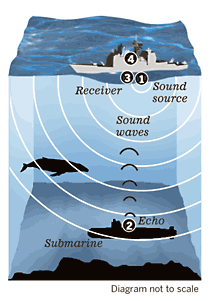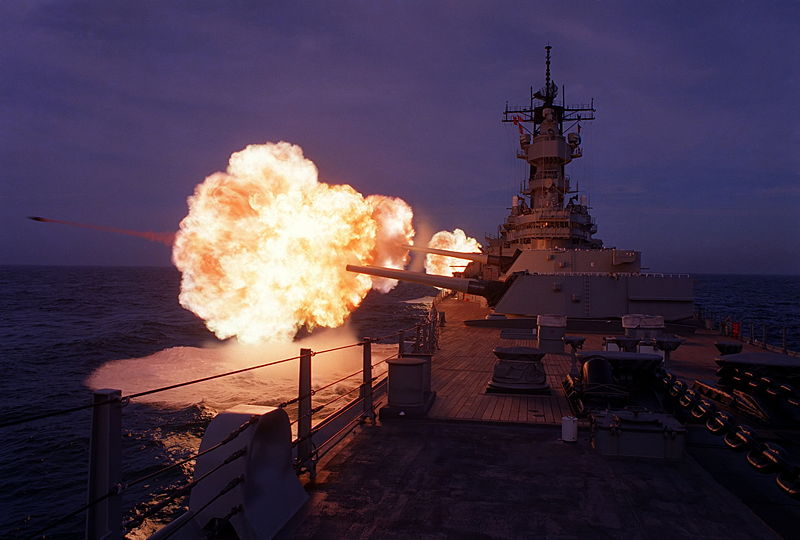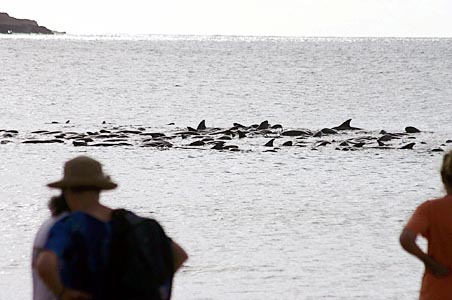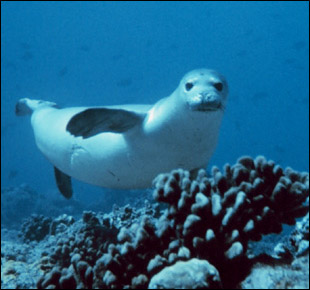Blog
News, updates, finds, stories, and tidbits from staff and community members at KAHEA. Got something to share? Email us at: kahea-alliance@hawaii.rr.com.
Another Mass Whale Stranding
Yep, February was “Humpback Whale Awareness Month” in the states, but March is looking like a not-so-hot one for other cetaceans…
Military sonar among suspected causes of mass whale stranding on the Tasmanian shore over the weekend.

Mark Simmonds, of the Whale and Dolphin Conservation Society and an expert on cetacean strandings, said that two species coming ashore together was enough to arouse suspicions of a human factor, including the use of sonar by the military.
Now, where did we leave those things?

UH, the Army and NOAA are getting around next week to looking for chemical weapons dumped off the Waianae Coast in the 1940s. A public report released in 2001 by the Army’s Historical Research and Response Team identified over 4,000 tons of dumped chemicals munitions, including hydrogen cyanide bombs, cyanogens chloride bombs, mustard bombs and lewisite.
 In the past, the Army has assured community members that chemical munitions will dissipate before causing any serious damage or that the pressure and cold temperatures of the depths of the ocean will render munitions inert–at least, in theory. In reality, containers corrode over time, releasing the chemicals into the ocean. The longer the chemicals remain in the ocean, the greater the chances for a rupture or leak.
In the past, the Army has assured community members that chemical munitions will dissipate before causing any serious damage or that the pressure and cold temperatures of the depths of the ocean will render munitions inert–at least, in theory. In reality, containers corrode over time, releasing the chemicals into the ocean. The longer the chemicals remain in the ocean, the greater the chances for a rupture or leak.
‘There are a number of avenues of risk associated with this. The highest is to marine life. In small doses chemicals can accumulate in animals and work their way up the food chain. There are also impacts on the reproductive capabilities of some species, in addition to the lethality of higher doses.” – Craig Williams, Chemical Weapons Working Group
Next week’s effort is part of an eventual plan to attempt to remove or destroy in place dumped munitions off the Waianae Coast. The communities along the Waianae Coast have for years advocated for clean-up, over Army objections.
“If you’re telling the community that there is nothing to be afraid of, and that it (ordnance) can stay in the ocean without any consequences, then by the same token you should be able to remove it.” – Colleen Hanabusa, State Senator, 21st District
Star-Bulletin Coverage at: http://www.starbulletin.com/news/20090225_Depth_Chargers.html
Understatement of the Month
From the Honolulu Advertiser coverage of the grounding and sewage release by the U.S. Navy’s 567-foot Port Royal:
The omission was one more bit of embarrassment heaped onto the 3 1/2-day spectacle of a 9,600-ton warship capable of shooting down ballistic missiles in space sitting helplessly aground in 17 to 22 feet of water just off Honolulu International Airport’s reef runway.
We’d like to officially submit “one more bit of embarrassment” as the understatement of the month.
Full article at: http://www.honoluluadvertiser.com/apps/pbcs.dll/article?AID=/20090211/NEWS08/902110398

Coincidence, totally. Right.
Monday = RIMPAC exercises end and another whale strands itself on Molokai beach. Think they’re related?
“Any statements implicating sonar or RIMPAC activities are premature and speculative,” said spokesman Mark Matsunaga.
Star-Bulletin story: http://starbulletin.com/2008/07/30/news/story09.html
“Obviously I feel that there may be a correlation because, for one thing, this type of whale stranding does occur for a variety reasons. This particular type of whale has consistently been associated with stranding related to the Navy’s sonar all around the world,” said Paul Achitoff, attorney with the Earthjustice office in Hawaii, adding, “So when one happens while the Navy is using its sonar … it’s obviously something that should raise concern among any objective person.”
Thar She Blows: DU on the move on the Big Island
“Waiki`i Ranch Dust Samples Show No Depleted Uranium” is apparently receiving a skeptical response from local and international scientific experts, according to our friends at Malu `Aina on Hawai`i Island.
The report posted a “statistically insignificant” amount of depleted uranium (DU) in the community of Waiki`i, 8 – 10 miles downwind of Pohakuloa Training Area (PTA), where the Army admitted in 2006 to using DU spotting rounds for its Davy Crockett nuclear weapons system. The test is based on a sample taken by Waiki`i Ranch Depleted Uranium Project Manager, David Bigelow, and sent to a laboratory in England for analysis.
From Malu `Aina guys:
Dr.Rosalie Bertell, PhD, remarks that the lab report “actually says that there IS DU in the sample. There should be zero. It is irrelevant that it is ‘not significant.’” Dr. Bertell — who has been honored by the U.N.as a statisticisn, epidemiologist, and member of the Science Advisory Board, International Joint Commission of the U. S. and Canada — goes on to say: “What you really want to know is whether or not the uranium found in the sample has been fired. This means electron spectroscopy.” Dr. Pang is also skeptical about the term “statiscally insignificant.” He claims that the laboratory’s reading of 1/100 DU, allowing for a measurement error of 1%, could mean the presence of 2% DU in the sample instead of its “zero” interpretation.
Dr. Lorrin Pang, MD, MPH, comments: “it is hard to do statistics with a sample of one,” referring to the single dustpan sample depicted on the front page of the newspaper’s July 22 issue. Dr. Pang, speaking as private citizen, is retired from the Army Medical Corps, is on the Best Doctors of America list 2006-8, and a consultant to the World Health organization (WHO) since 1985. Russell Takata, state radiation chief, is also on record as questioning WRHOA’s methodology.
To label tests a “bust” and conclude that “preliminary results find no health hazard” is simply not supported by fact. Closer to the truth is that we have been told little or nothing about whatever tests may have been conducted by the state or federal governments. Mr Takata refers to “preliminary reviews of about 90% of test results” but gives no data. What about the other 10%? The Army allegedly tested 800 dust samples, but these results have yet to be made available to the state or the public. All of this adds up to sweeping claims of safety, while providing no hard data to back them up. This has been a repeated pattern over the past several years: claims but no data.
The Hawaii County Council by a vote of 8-1 on July 2nd, passed resolution 639-08, calling for the halting of all live-fire that could spread military radiation and independent, comprehensive, testing
Say NY Times and Star Bulletin: Navy should comply with Environmental Laws
(graphic from abcnews.com)
The Supreme Court has taken up the question of whether the Bush Administration can exempt the Navy from laws protecting marine mammals from sonar, and media is chiming in. Both the New York Times and Star Bulletin have come out recently in favor of upholding environmental law when it comes to Navy training exercises.
From Op-Ed in today’s New York Times:
Environmentalists have long claimed that the Navy’s use of sonar for training exercises unduly threatens whales, dolphins and other acoustically sensitive marine creatures. The Navy has adopted some procedures to mitigate the risk but has resisted stronger protections ordered by two federal courts. The Supreme Court has now agreed to address the issue.
The justices will not try to determine the extent of harm but rather the balance of power between the executive branch and the courts in resolving such issues. In an effort to sidestep the courts, the Bush administration invoked national security to exempt the Navy from strict adherence to the two federal environmental laws that underlay the court decisions. The top court will now have to decide whether the military and the White House should be granted great deference when they declare that national security trumps environmental protection or whether the courts have a role in second-guessing military judgments and claims of fact.
The case at hand was filed by the Natural Resources Defense Council and other conservation groups to rein in Navy training exercises that use sonar to search for submarines off the coast of Southern California. The Navy says that its exercises pose little threat to marine life and that the training is vital to national security.
A federal district judge and a federal appeals court in California, after careful reviews of the facts, have found that the Navy’s arguments are largely hollow. Although the Navy likes to boast that there has never been a documented case of a whale death in 40 years of training, that may be mostly because no one has looked very hard. The Navy itself estimates that the current series of drills, conducted over two years, might permanently injure hundreds of whales and significantly disrupt the behavior of some 170,000 marine mammals.
No one has questioned that sonar training is vital to national security, and the federal courts have not tried to ban the training. They have simply tried to impose tough measures to minimize damage. The Navy objected to two proposed restrictions in particular — that it shut off its sonar when marine mammals are detected within 2,200 yards and power down its sonar under sea conditions that carry sound farther than normal.
High-ranking officers said these restrictions would cripple the Navy’s ability to train and certify strike groups as ready for combat. The appeals court, mining the Navy’s own reports of previous exercises, disagreed. It said the Navy, following earlier procedures, had already been shutting down sonars with little impact on training or certification.
It seems telling that the Navy has accepted the 2,200-yard safety zone for other sonar exercises. NATO requires the same zone, and the Australian Navy mandates a shutdown if a marine mammal is detected within 4,000 yards.
The federal courts have played a valuable role in deflating exaggerated claims of national security. Let us hope that the Supreme Court backs them up.
And, from our own Honolulu Star-Bulletin:
The Navy’s application for a new permit for sonar training exercises in Hawaii waters could be the last time it will need to go through the process, depending on a ruling from the U.S. Supreme Court.
Should the court agree with the Bush administration’s assertion that it has the authority to override laws that protect the environment and marine mammals, the Navy would no longer be required to seek the permits designed to minimize harm to ocean species.
The court is not expected to focus on a continuing dispute between the Navy and environmental organizations about the level of injury sonar causes to marine mammals.
Instead, justices will decide whether the administration, with the support of the military, can set aside enforcement of well-established law. The administration argues that protective conditions put in place by federal courts jeopardize “the Navy’s ability to train sailors and marines for wartime deployment.”
The claim is belied by the fact that the Navy has been able to conduct training while mitigating harm.
The case involves naval exercises off the Southern California cast in which a federal judge restricted mid-frequency sonar use and required it to be shut down when a marine mammal is sighted within 6,000 feet. In a similar ruling in Hawaii, federal Judge David Ezra established several guidelines, putting the range at 5,000 feet. The different requirements have frustrated the Navy, but they are due to variations in coastal waters and marine mammal populations.
While the California case was proceeding through the appeals court, President Bush exempted the Navy from the Coastal Zone Management Act. At the same time, an executive branch agency, the Council on Environmental Quality, granted an exemption of the National Environmental Policy Act, claiming an emergency situation. The Defense Department has previously claimed an exception for “military readiness activity,” as allowed under the Marine Mammal Protection Act.
Through these laws, environmental groups have been successful in establishing restrictions, showing evidence that sonar soundings have injured or led to the deaths of whales. Navy studies have shown probable harm, disturbance or death to 175,000 marine mammals. The Navy also says only 37 whales have died from sonar since 1996, but that doesn’t mean that other haven’t been killed without their carcasses being found.
(Photo: 2006 dolphin stranding, Mozambique.)
The administration’s crafty argument, however, is aimed at defining the scope of executive authority, which might be a gamble because the court has not been sympathetic to Bush’s attempts to stretch presidential power.
A ruling will have implications in Hawaii, where the Navy’s permit for sonar exercises will expire in January. Until the court’s decision in its next term, the public has an opportunity to weigh in with the argument that training can be conducted effectively while reducing the risk of harm to animals in the sea.
Bombs Away! RIMPAC's Back
From Marti:
RIMPAC officially started on Sunday, meaning you can expect beach closures, random explosions, mass strandings, and displays of excessive military force throughout the month of July in Hawaii. Remember, RIMPAC is the bi-annual demonstration of U.S.-occupation that brought us the “Hanalei Bay Incident” in 2004, when 150 melonhead whales attempted to strand themselves because of the Navy’s use of high-intensity active sonar AND the unexplained nearshore explosion that shook the windows of Ewa Beach residents on Oahu in 2006.
This year we can look forward to 150 vessels and 20,000 troops from U.S.-backed militaries — like Russia, South Korea, Australia, Japan, and Peru — engaged in all kinds of wargames, such as assault landings, target practice with live rounds, and high-intensity active sonar.
To move forward with these (and all) exercises as originally outlined in the Navy’s giant range expansion plan, the Navy had to do *something* about the pesky limitations placed on those exercises by the State of Hawaii under the Coastal Zone Management Act (CZMA). This federal law was passed to encourage coastal states to do more to protect their precious coastal resources, including giving these states unique authority to require federal agencies abide by state coastal protections.
Under this unique federal law, the State of Hawaii said the Navy had to do two very reasonable things related to active sonar:
1. In nearshore waters, don’t let the active sonar go above 145 decibels because this is widely accepted (even by the Navy) to be a safe level for marine mammals and humans;
2. In all other situations, abide by the conditions required by Judge Erza in the Federal District Court.
It’s not just that the Navy said “No, we don’t have to follow your stinkin’ coastal protections,” but that the Navy enlisted other government attorneys to say “no” for them in a way that would have undermine all of the cooperative state-federal partnerships set up to protect U.S. coastal resources.
I say “would have” because the legal opinion the Navy ended up with is so poorly argued that it probably won’t have much affect. Of course, it will probably take more court action at some level to sort that out.
The two basic reasons why the Navy’s legal game of Twister fails is:
1. It relies on a court opinion that was vacated, meaning the judge revisited her decision and changed her mind based on new evidence or arguments.
2. The new argument that changed the judge’s mind was that the Endangered Species Act actually says states do, in fact, have the authority to protect endangered marine species to greater extent than the federal government. And it’s well accepted that the Endangered Species Act trumps the Marine Mammal Protection Act when it comes to endangered marine species.
Sigh.
We’ll continue to keep you updated on this saga. In the meantime, you can send your thanks to the State Planning and Director Abbey Mayer for standing up for coastal protections in Hawai`i nei.














